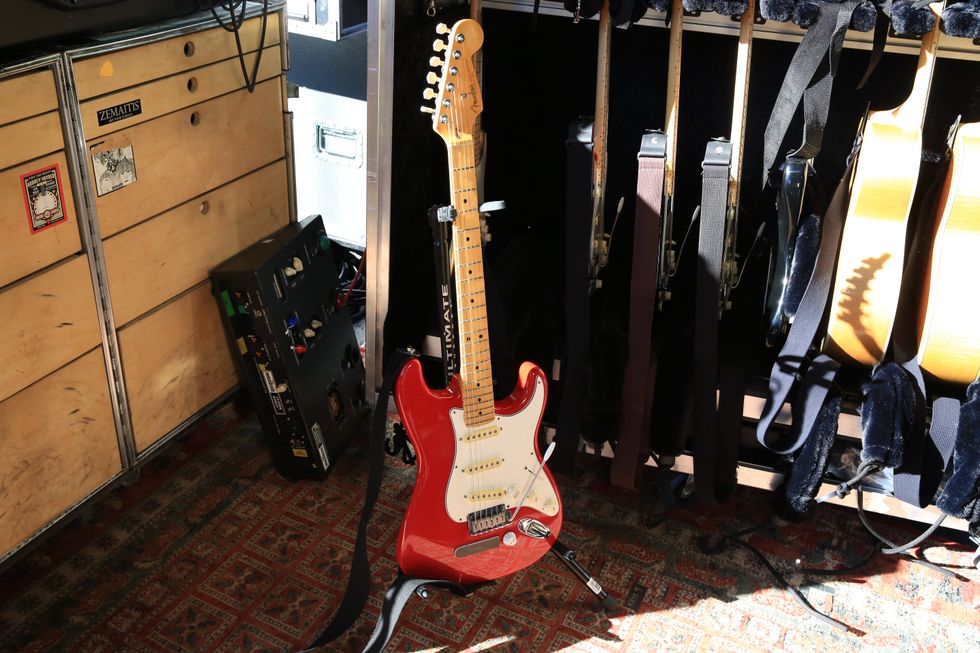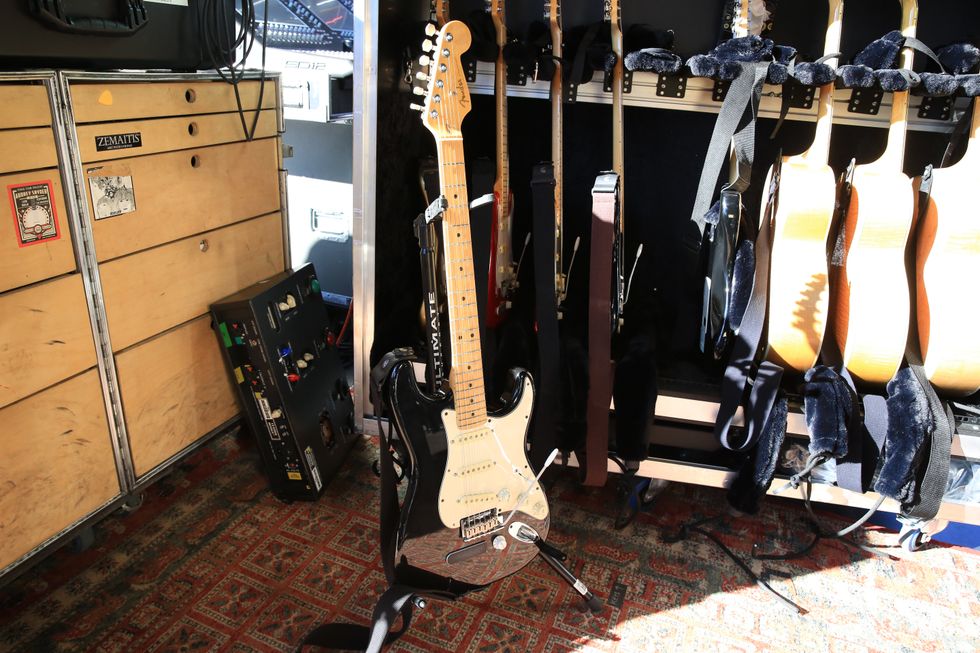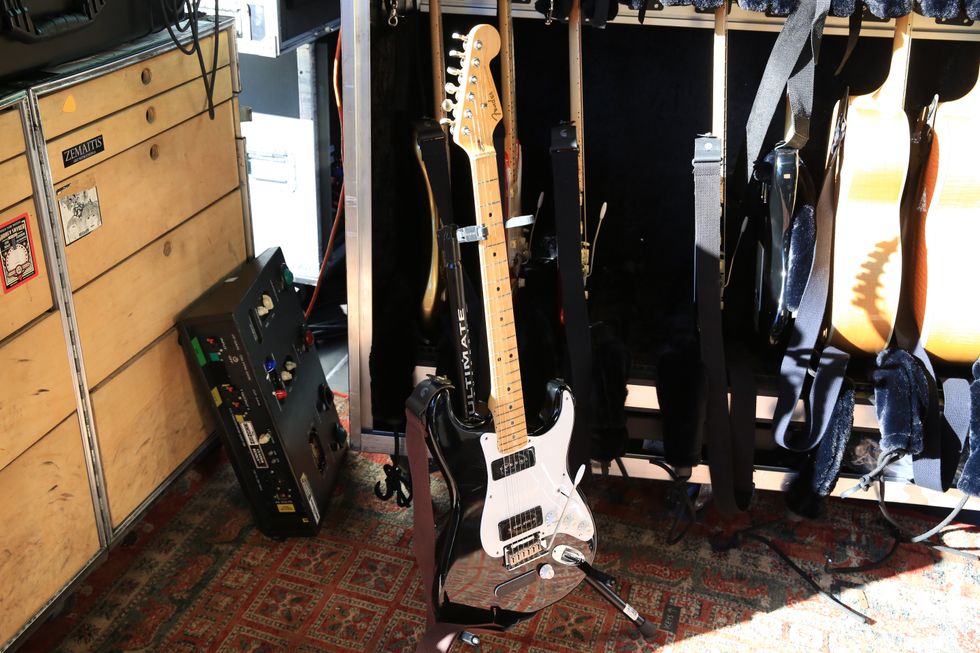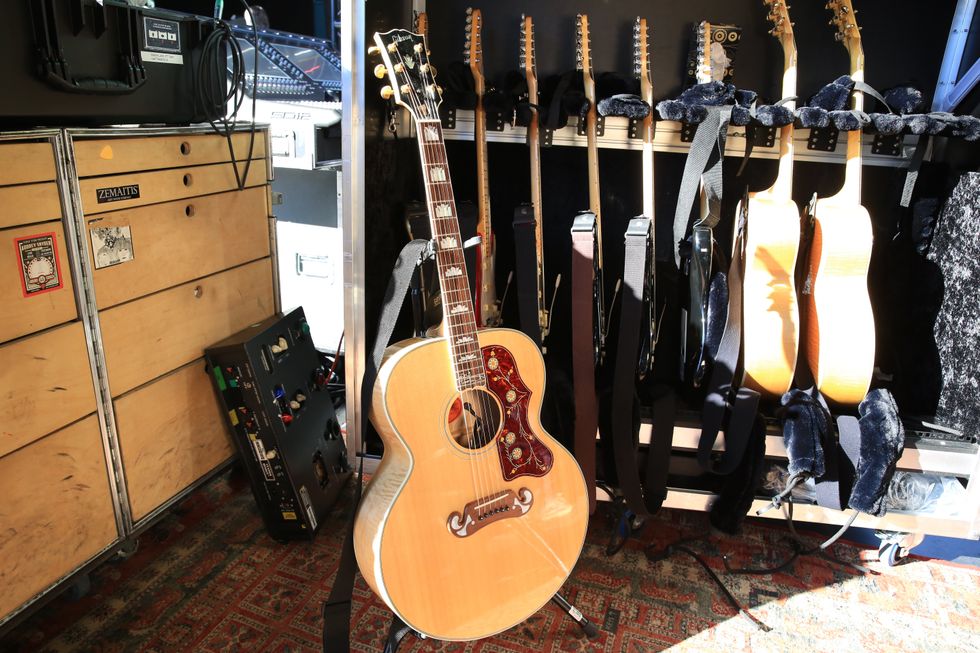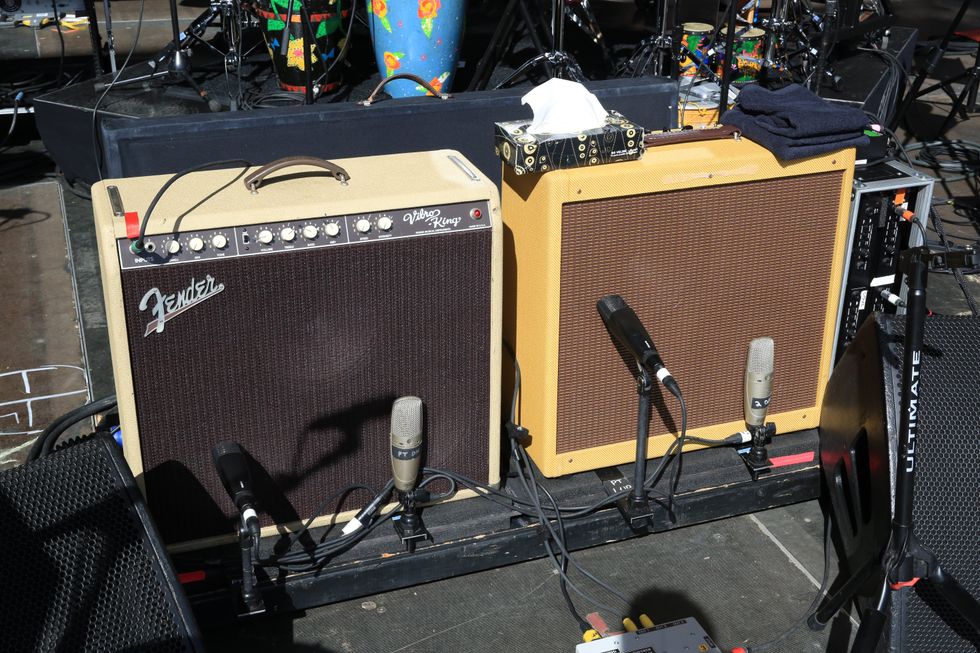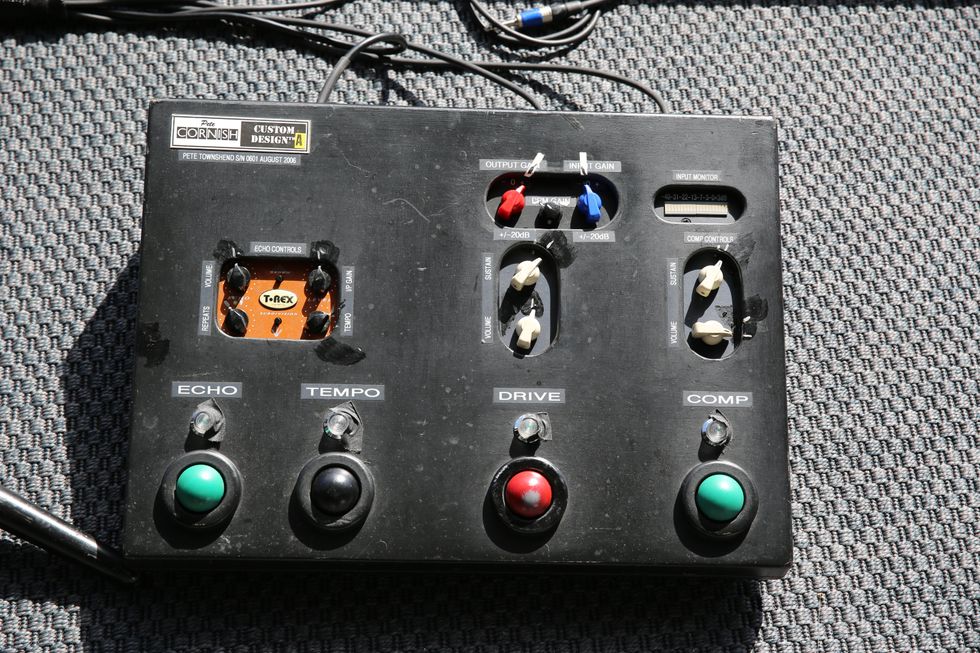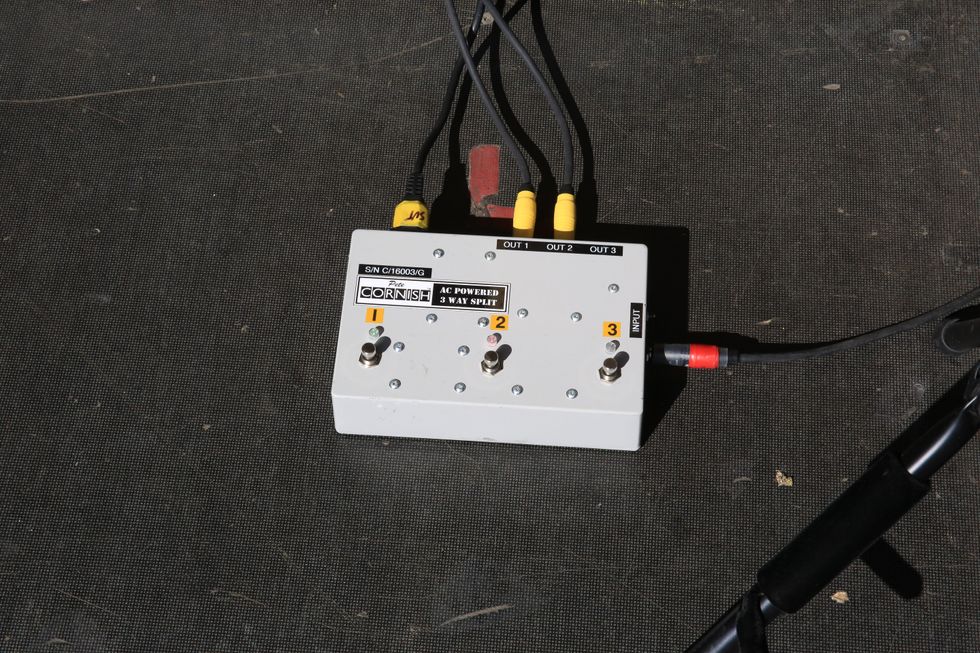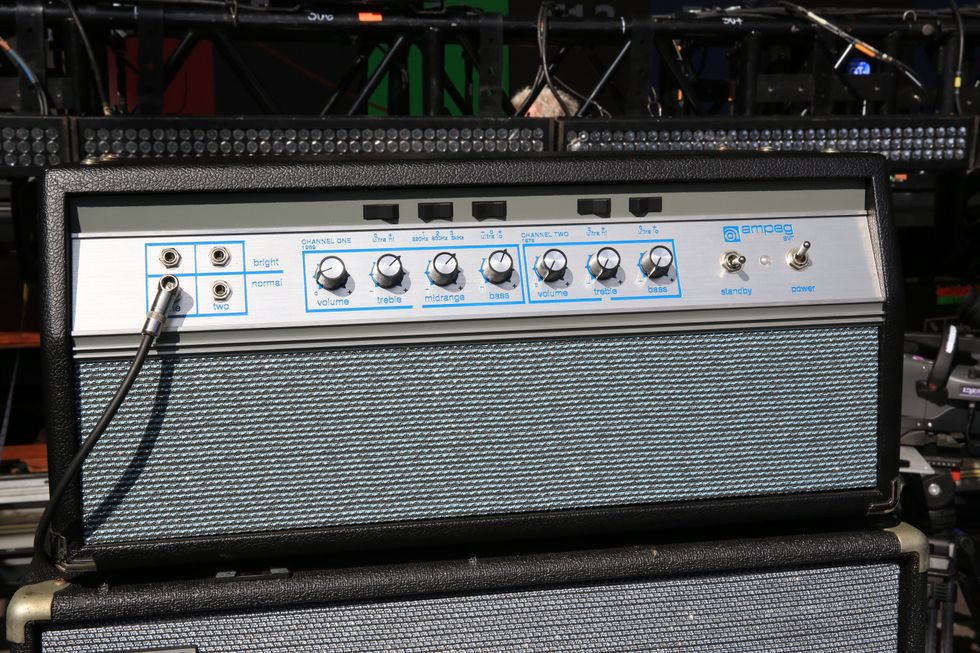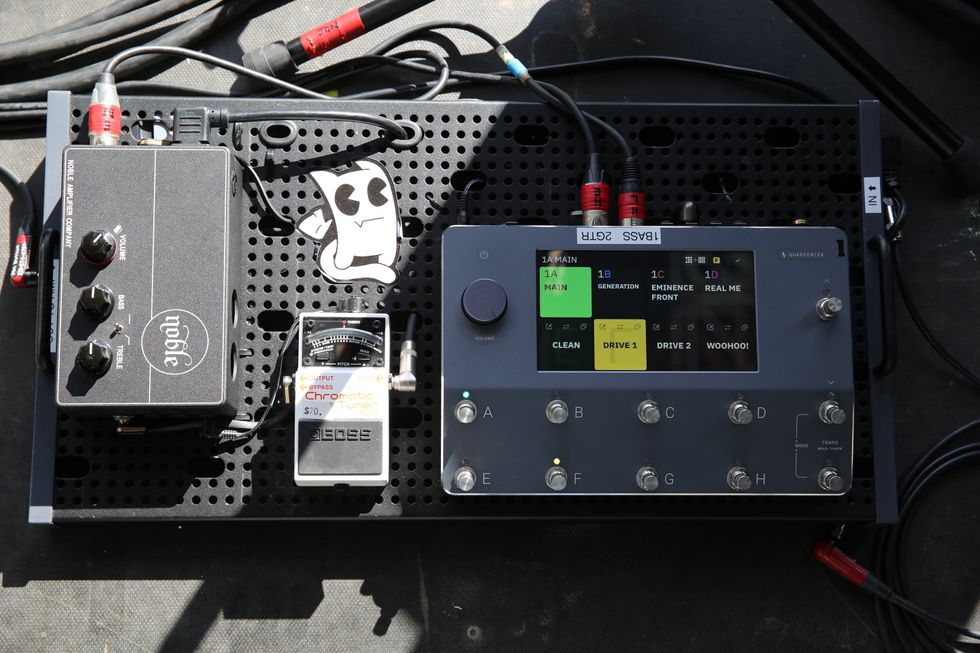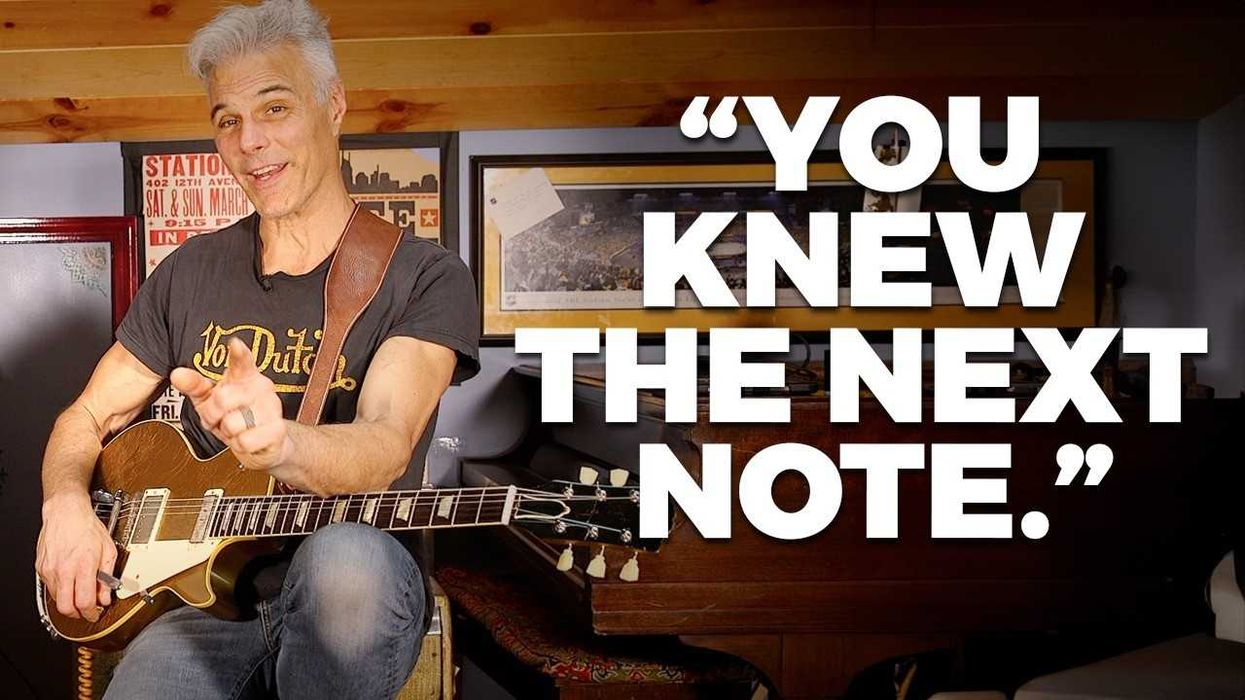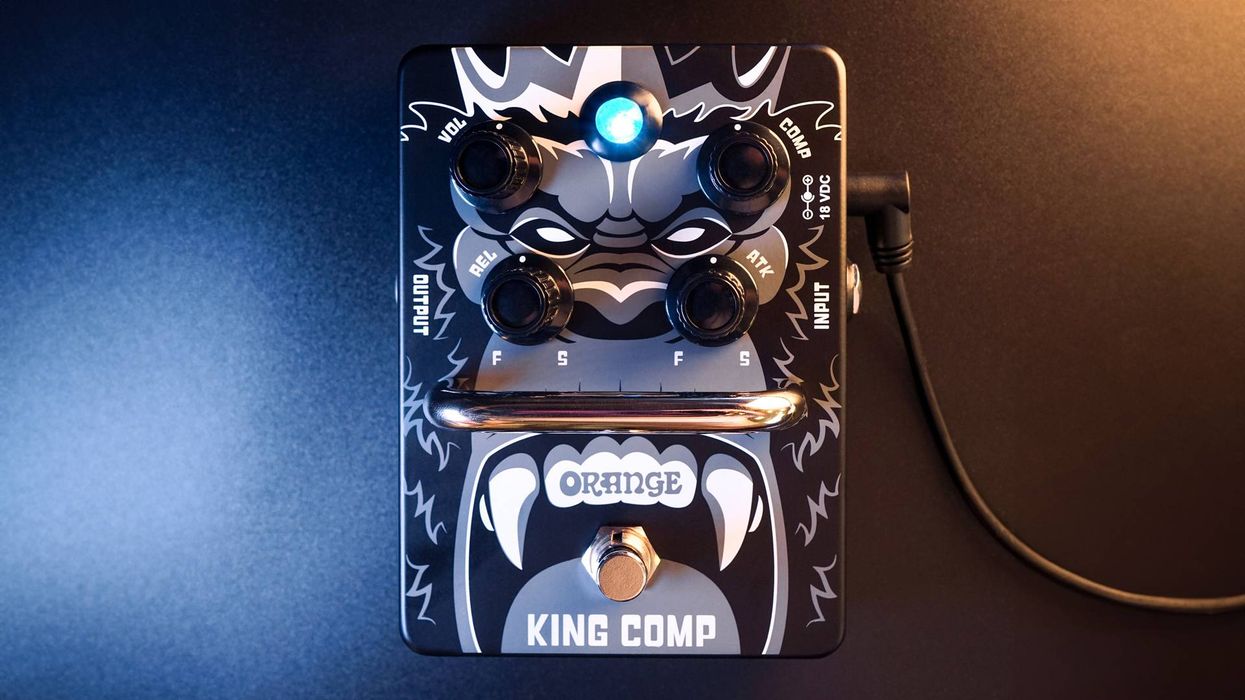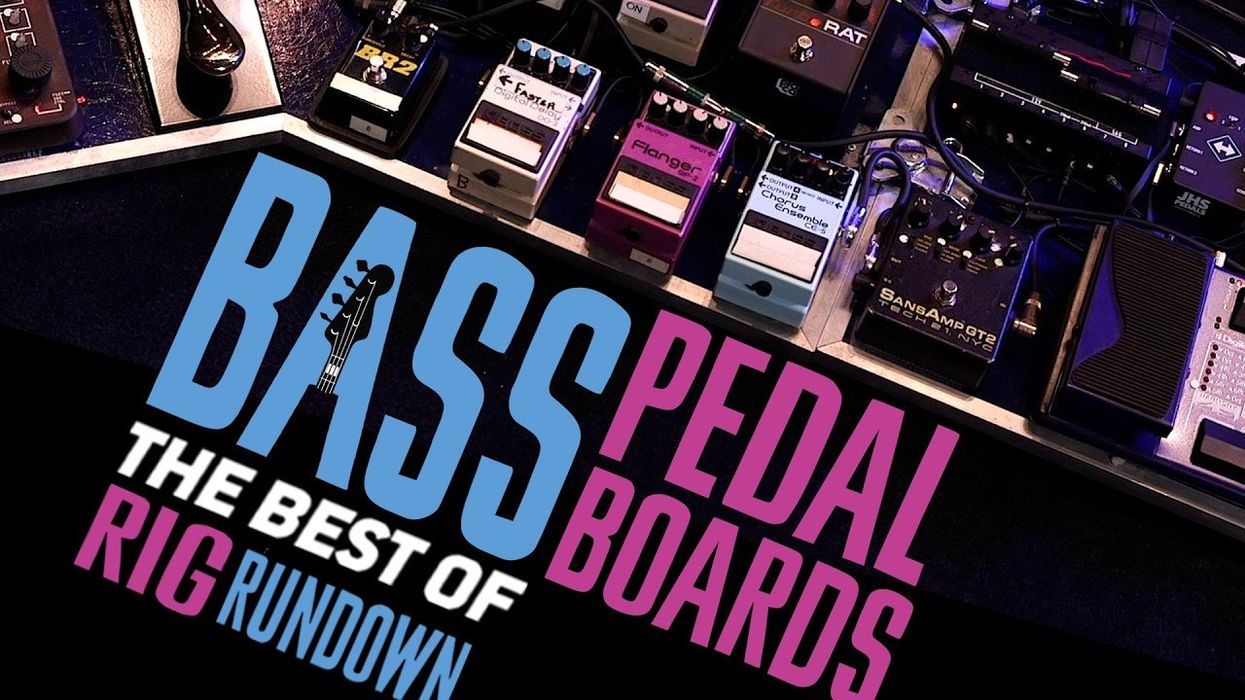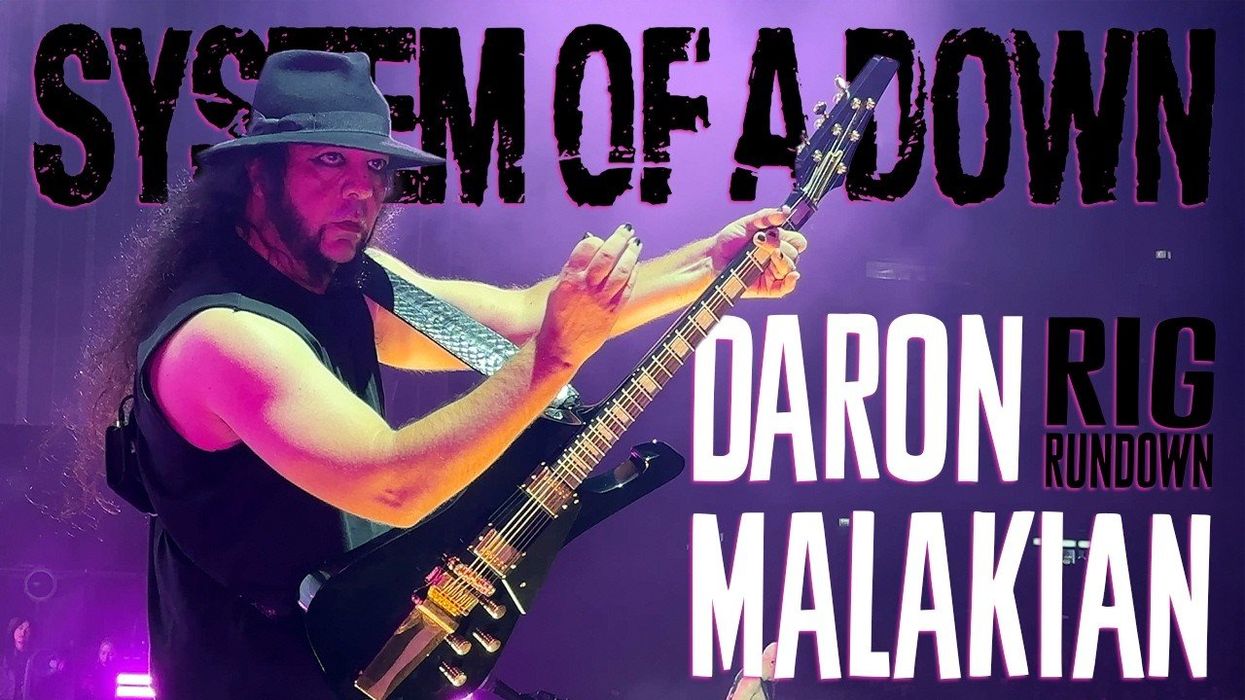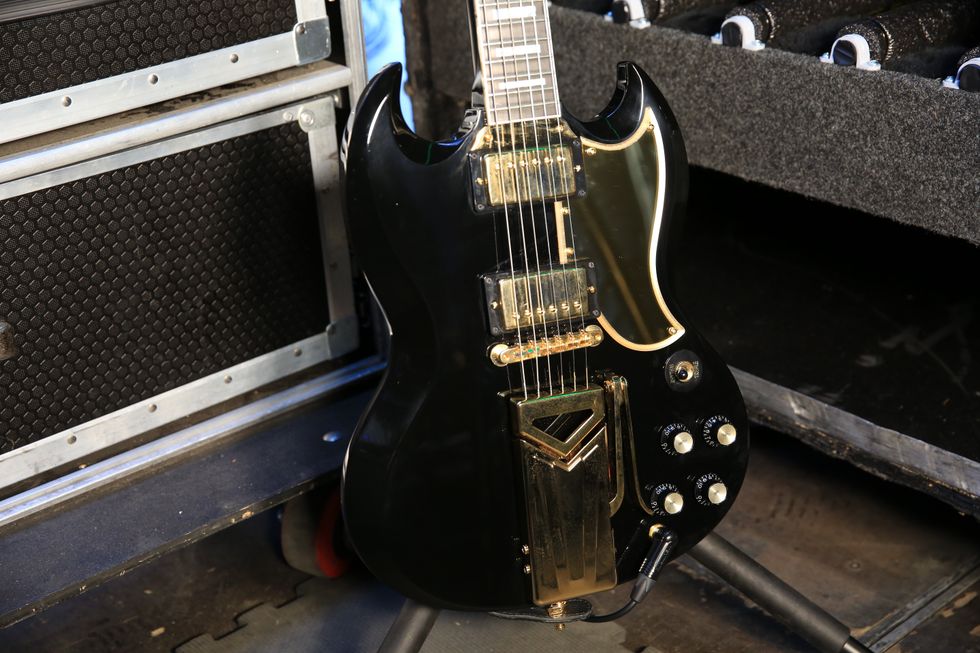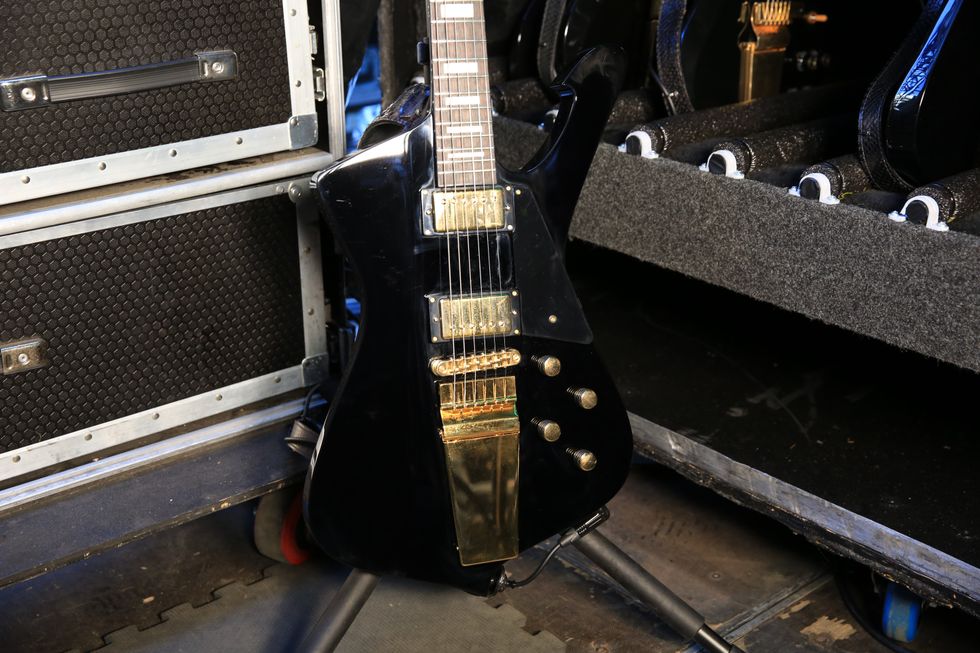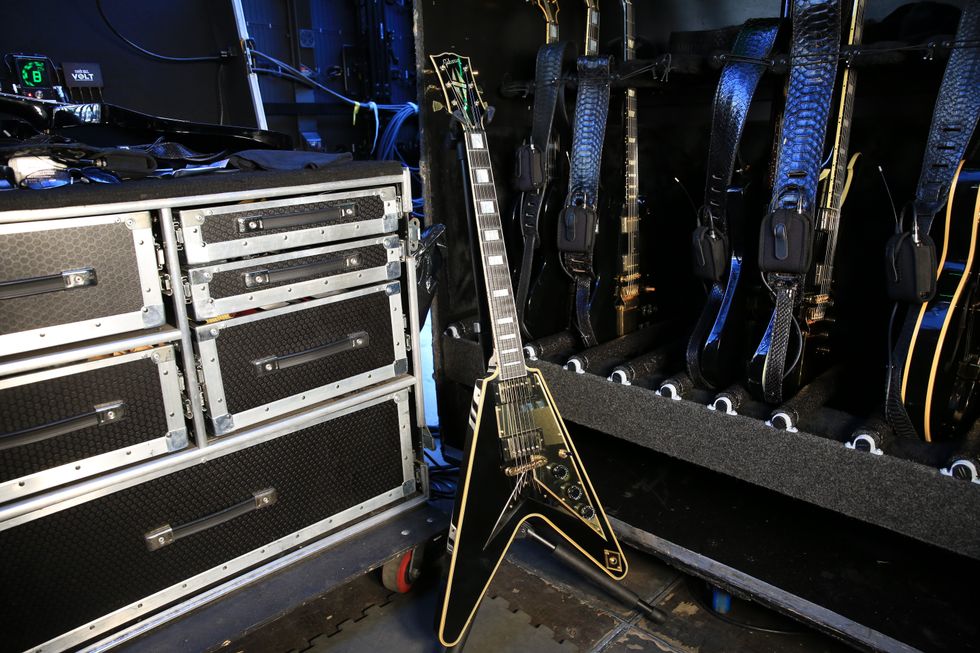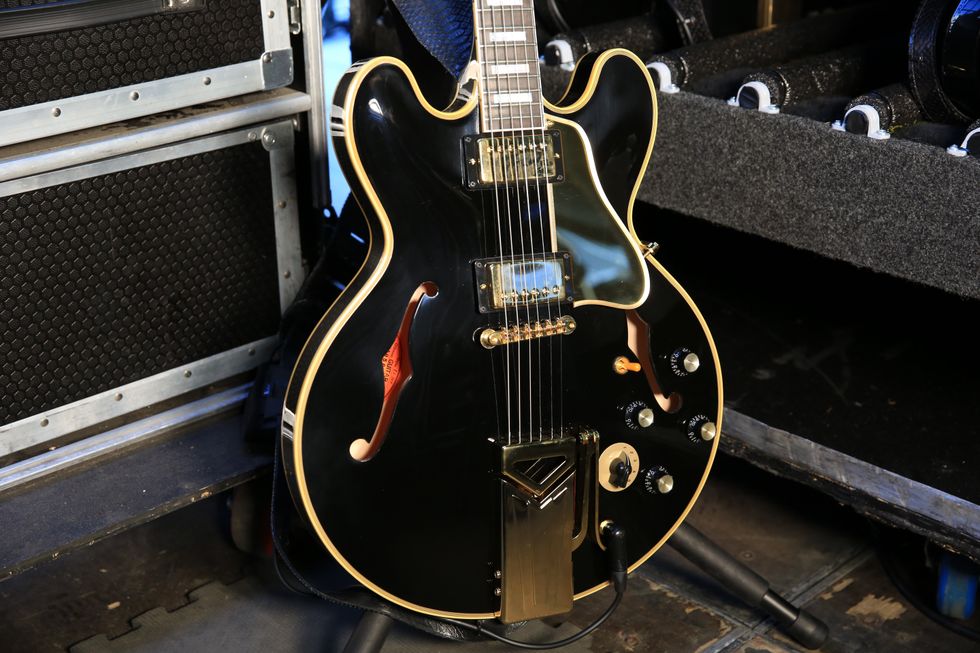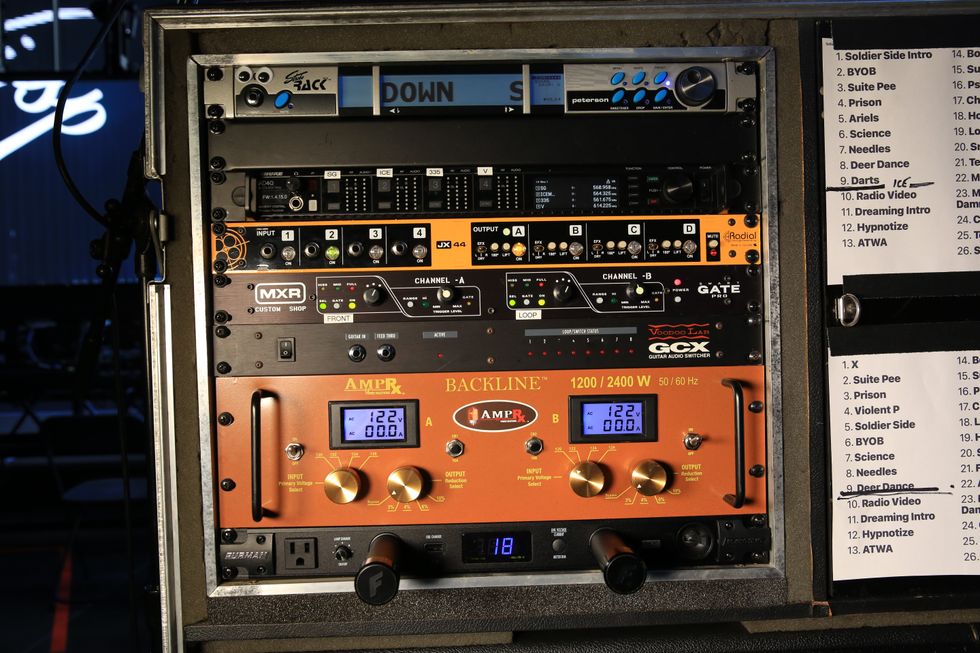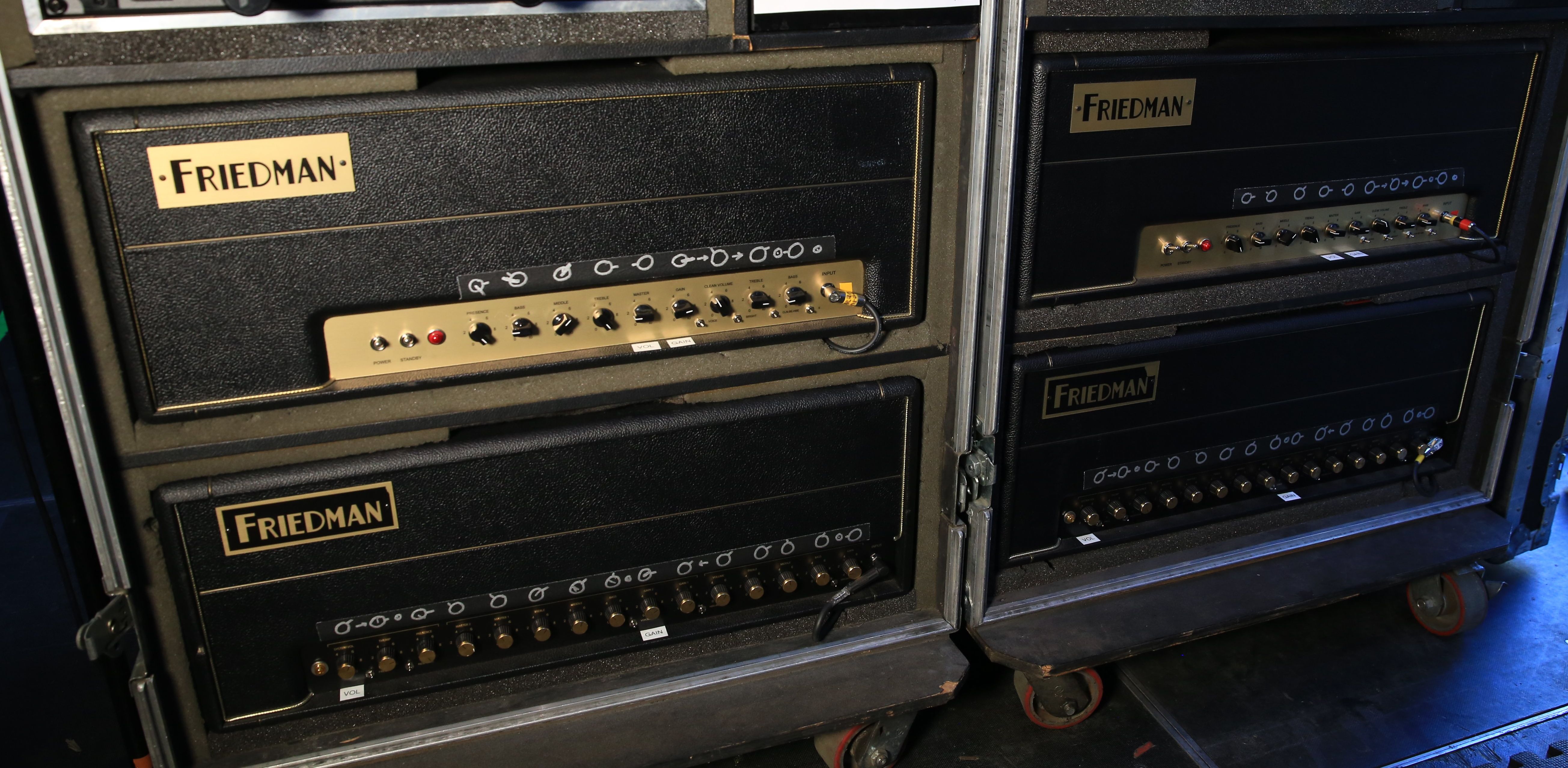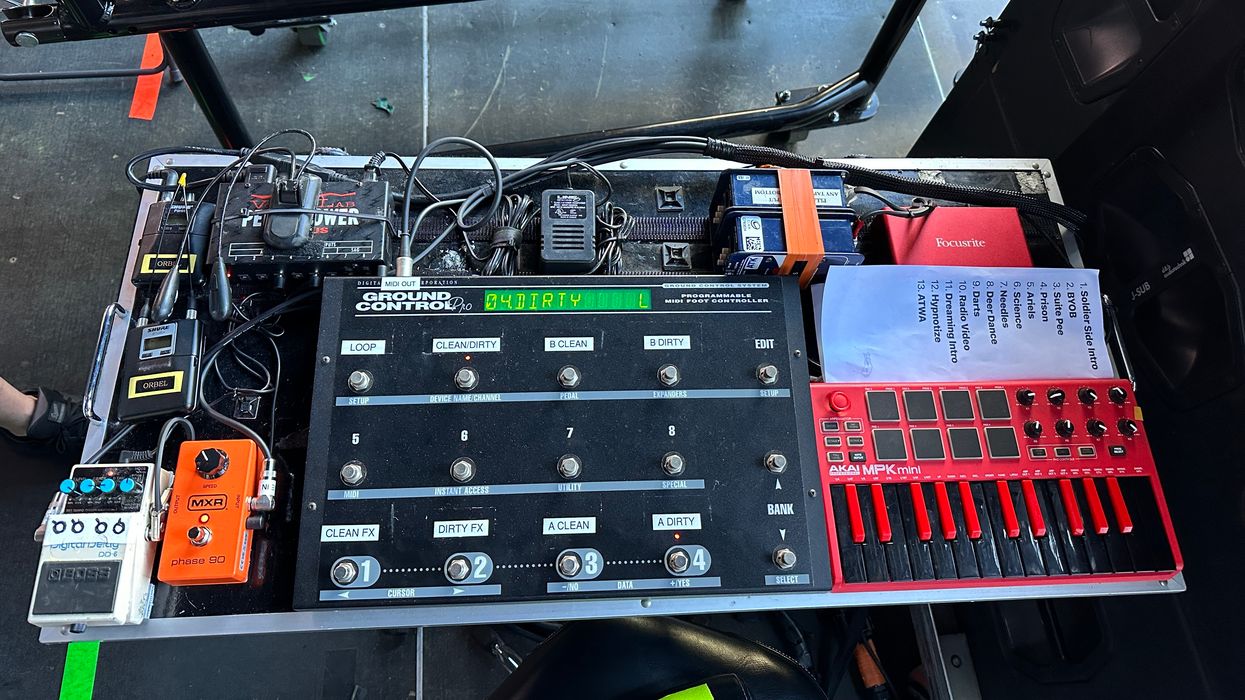See how these guitar-playing producers create pit-provoking, sinister sounds by combining a Swollen Pickle, 5150s, and wayward pitch-shifting.
There’s heavy music … and then there’s End. Formed in 2017, the band is vocalist Brendan Murphy (Counterparts), guitarist Will Putney (Fit for an Autopsy), guitarist Gregory Thomas (formerly of Shai Hulud and Misery Signals), bassist Jay Pepito (Reign Supreme), and drummer Billy Rymer (the Dillinger Escape Plan). The supergroup was created to push the extremes of hardcore music. And, as you’ll soon find out in this Rig Rundown, mission accomplished.
From day one, guitarists (and producers) Putney and Thomas strived to achieve a signature calling card. They wanted a monstrous, monolithic tone that bulldozed listeners. “It’s pretty aggressive [laughs],” concedes Putney. “When we started the band, Greg and I talked about finding an identifiable tone that was us and sticking with it.”
And the roots of their sledgehammering sound? “We’re very influenced by the Nordic metal of Entombed, and then, later, Rotten Sound, and American delineations Trap Them,” says Thomas. “A lot of those bands rely on the Boss HM-2 or clones to get their grinding distortion. We actually landed on the Way Huge Swollen Pickle fuzz because it’s more articulate for our galloping picking and offers more control.”
While the band does continue to challenge their consistently crushing sound, the Pickle always satisfies. “Every time we record something, we’ll try other pedals in place of the Swollen Pickle, but we always go back to it,” admits Putney. “It’s become the one. It’s us.”
Hours before End’s sold-out show at Nashville’s the End (appropriate coincidence), PG’s Perry Bean popped onstage to explore the (nearly) mirrored, merciless setups of guitarists-turned-producers Putney and Thomas. Thomas details how three octave pedals and two noise gates coexist in his setup. Putney pulls back the curtain on the development of his signature STL Tones Tonality package. And both prove that a bottom-heavy fuzz paired with prominent pitch-shifting into a 5150 is the way to part seas and elicit moshing madness.
Brought to you by D’Addario XPND Pedalboard.
A Mean Marauder
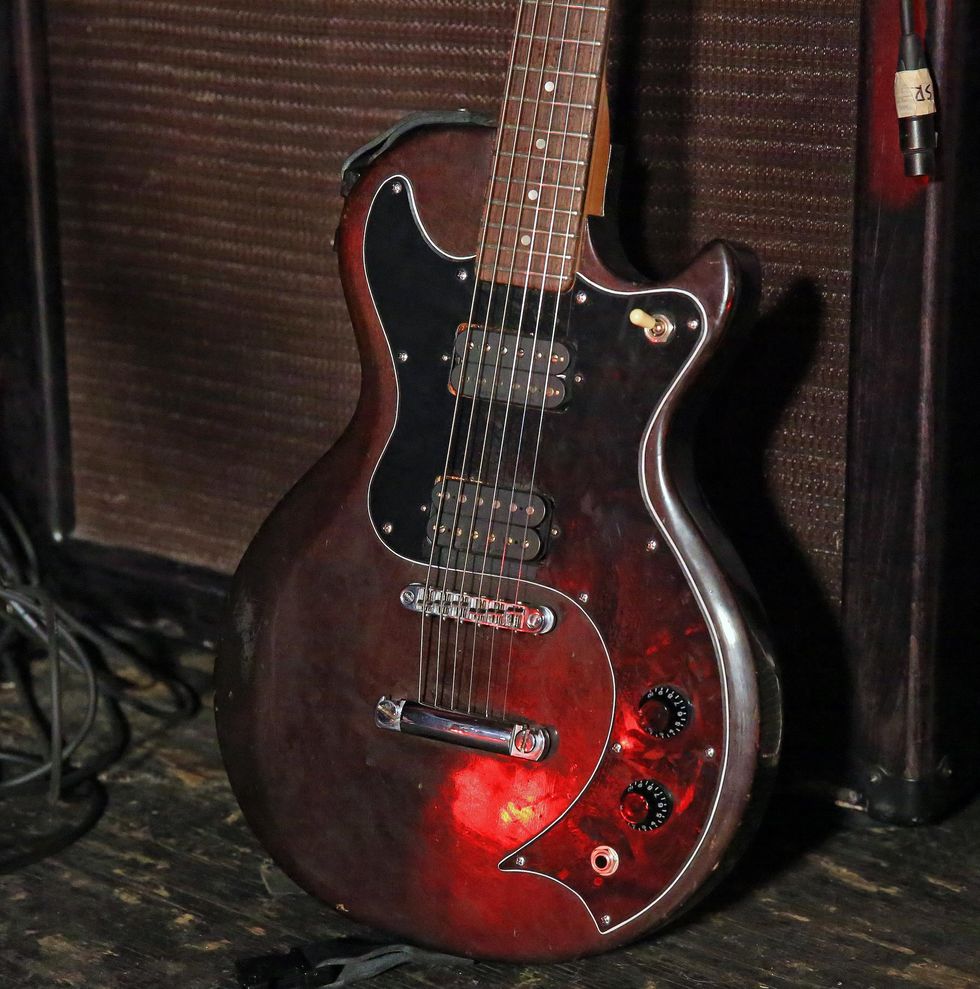
The connection between Gregory Thomas and the Gibson Marauder can be pinpointed to when he first saw Quicksand’s video for “A Thorn in My Side.” It featured frontman Walter Schreifels riffing on the overlooked singlecut. It was only in production for five years (1974-1979), turning out just over 7,000 guitars. The Maurader was aimed as a bolt-on-neck, single-coil rival to the popular Fender models. Thomas has collected four of these ’70s oddballs, and while they all share the same ingredients (modified with humbuckers), he claims each one has its own distinctive snap and snarl.
Currently, this Marauder has a Seymour Duncan Nazgul (bridge) and Sentient (neck). The neck pickup is disconnected, making the pickup selector a killswitch. For End, both Thomas and Putney live and die on the bridge pickup. His backup Marauder has a custom-wound set of Black Triangle humbuckers. They exist in drop C tuning (with the low E tuned to C rather than D, to create more dissonance) and use various string brands gauged .010–.052.
Are You Mistaken?
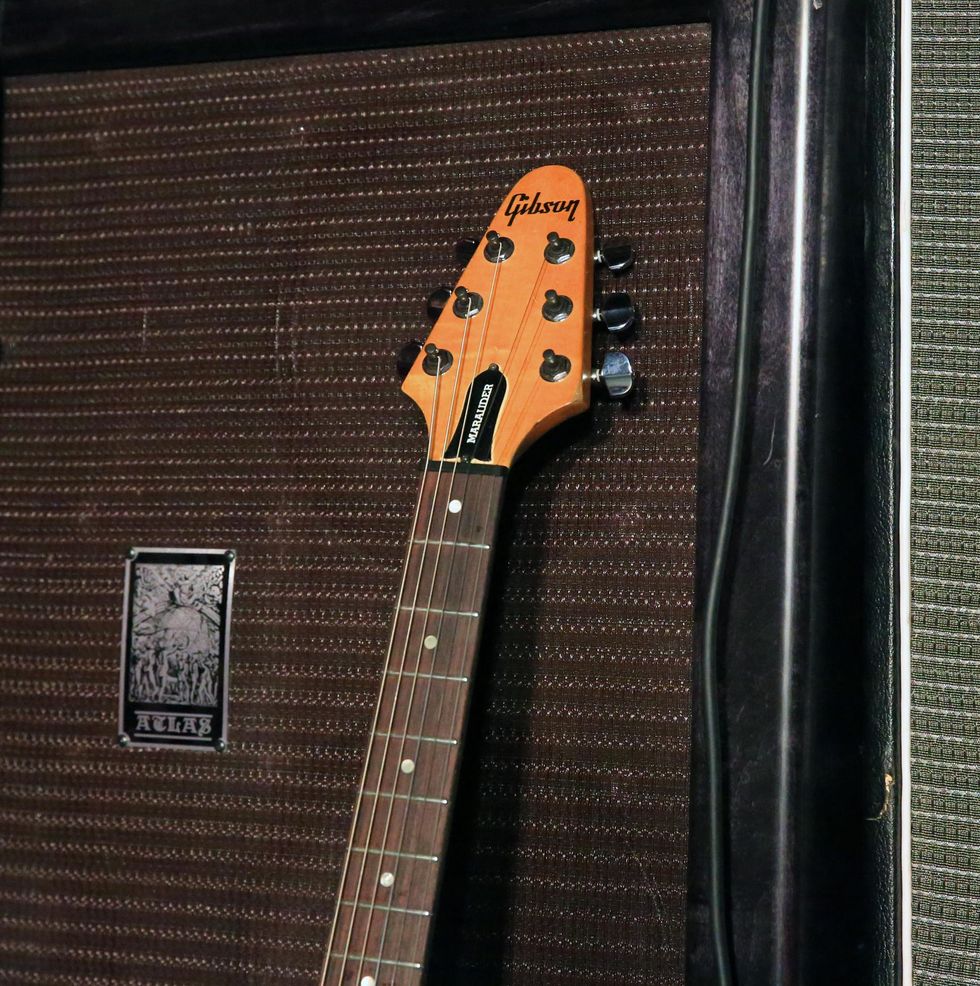
The unusual Marauder continues to baffle as it is paired with a headstock normally reserved for Gibson’s Flying V guitars.
Amp Swap

Prior to starting End, Thomas played rhythm guitar for the metalcore act Misery Signals. After wrapping a tour, he and lead guitarist/cofounder Ryan Morgan accidentally swapped Peavey 5150 heads. They later acknowledged the goof but kept using each other’s amps. The above firebreather was used by Morgan on the band’s first albums Of Malice and the Magnum Heart and Mirrors. Since adopting this 5150, Thomas had its innards overhauled by “Stereo Joe,” who removed unnecessary resistors and installed bigger filter caps, giving the amp more volume and bite. It hits a sturdy Atlas 6x12 that is constructed with dovetailed 13-ply (3/4") Baltic birch and finished with a maple hardwood front frame. The speakers inside are four Celestion Vintage 30s and two Celstion G12H-75 Creambacks.
Up, Down, Up
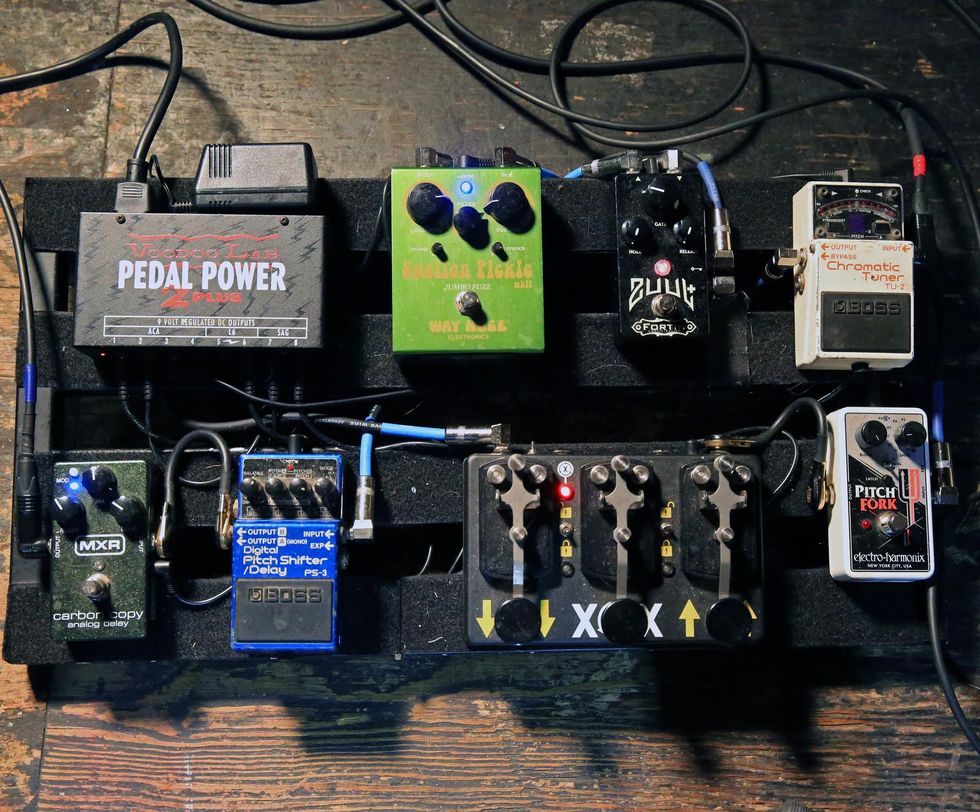
There’s basically three main functions or sections to Thomas’ pedal playland: fuzz, noise, and pitch-shifting. The Way Huge Swollen Pickle is Thomas and Putney’s substitution for the heralded Boss HM-2 buzzsaw—a hallmark of the Scandinavian-metal sound. The Pickle runs into the dirty channel of the 5150, creating a cascade of filth and furor. Next is the noise (or lack thereof). End are givers of gain, and to keep things tight both guitarists run two Fortin Zuul noise gates. Thomas puts a new Zuul+ on his board, controlling the Pickle, while an original Zuul runs inside the amp’s effects loop to snare any remaining buzz. End’s low-end tidal wave of destruction is fortified with several pitch-shifters adding in low octaves. To accomplish this chest-punching power, Thomas employs an Electro-Harmonix Pitch Fork (dropping their tuning down to A#), CopperSound Pedals Triplegraph (co-designed by Jack White), and a Boss PS-3 Digital Pitch Shifter/Delay. (Keen observers will notice a MXR Carbon Copy that doesn’t necessarily fit into these categories, but he does run it with the mod circuit engaged, giving a slight up-and-down pitch shift to the delayed signal. So, it technically could fit under the pitch-shifting umbrella.) And a Voodoo Lab Pedal Power 2 Plus brings life to his board, while a Boss TU-2 Chromatic Tuner keeps his guitars in check.
A Cyclops and Bigfoot Walk Into a Bar…
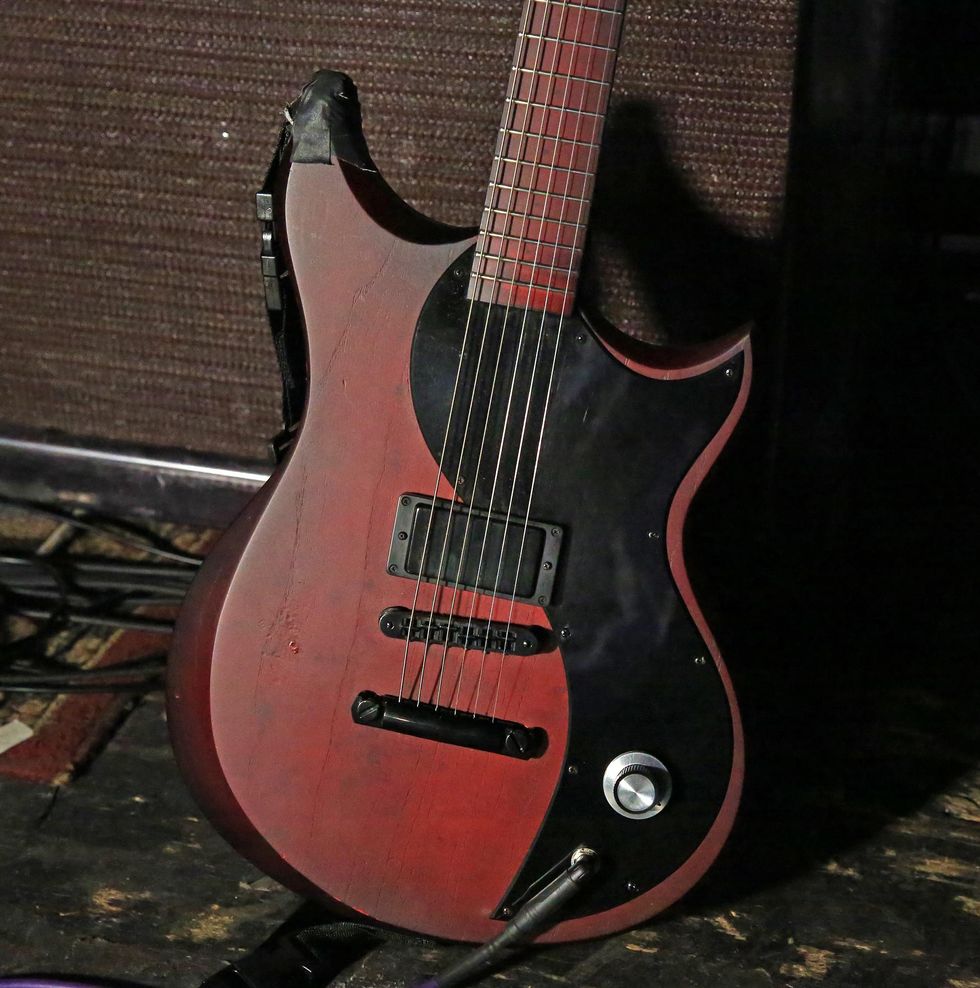
Guitarist Will Putney first made his mark in heavy music when he started deathcore dealers Fit for an Autopsy in 2008. Shortly after that, he added production to his musical credits when he opened Graphic Nature Audio, his Belleville, New Jersey, studio. He’s since put his stamp of stank on over 50 albums by various bands, including Every Time I Die, Counterparts, Like Moths to Flames, Body Count, Four Year Strong, and, of course, his own outfits. All this background information is pertinent to establish that Putney doesn’t waste time with subtleties.
When seeking out a Dunable Cyclops, he asked builder Sacha Dunable (also guitarist/singer of Intronaut) to give him “the crazy” pickup, so Dunable dropped in his Bigfoot. The ceramic, rail-type passive pickup offers about 20k of firepower. The swamp-ash body features an oversized single knob that controls volume, and it comes with a 25.5" scale length.
5150 Part Deux
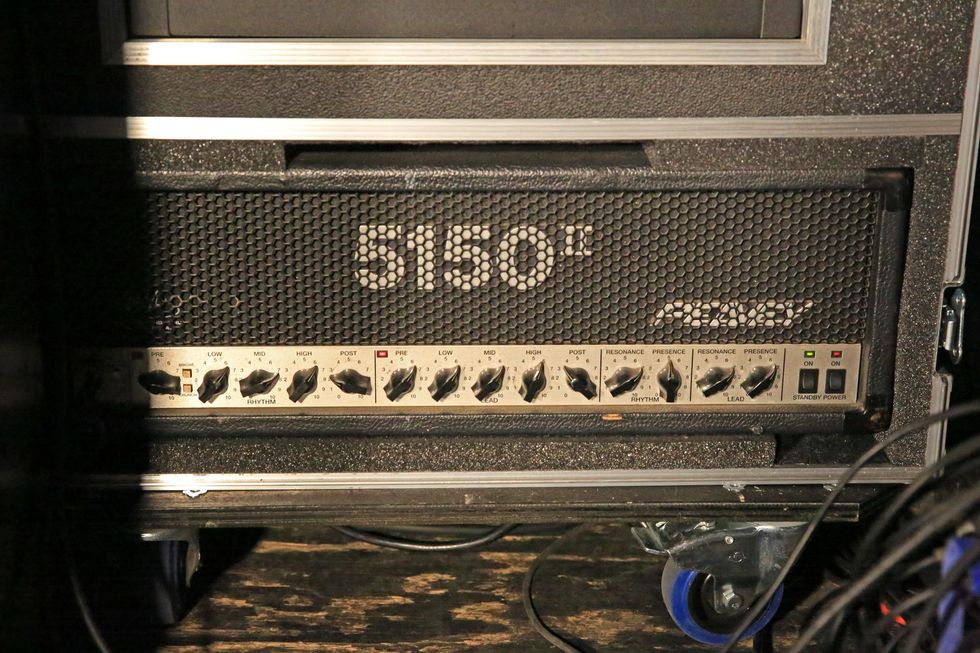
Like Thomas, Putney does not leave home without his Peavey 5150. He’s had this 5150 II model since he was 18. He tours with another Peavey 5150 and loves recording with the EVH 5150 III (EL34), but this is the one. (Hence, it's nestled into a secure road case for travel.) It feeds into a similar Atlas 6x12, to harmonize with Thomas’ aural avalanche.
Putney Pulverizes with Pedals

The first five pedals on Putney’s board are the same as Thomas’ setup (TU-2, Zuul+, Pitch Fork, Swollen Pickle, and Triplegraph). His board forms its own shape with the addition of the Abominable Pedals Demon Lung (fuzz), EarthQuaker Devices Astral Destiny, and MWK Audio Design Lonely Ghost (delay/reverb/boost). He runs a dbx 266xs Compressor/Gate in the effects loop of the 5150 II.


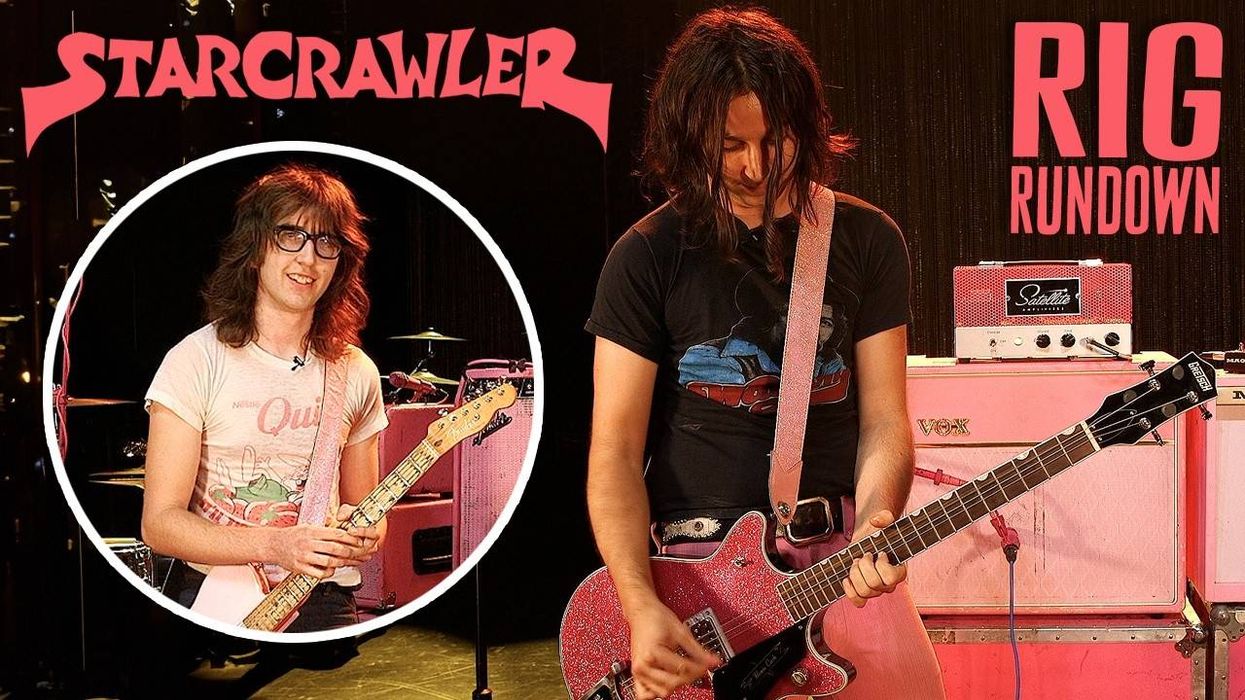
![Devon Eisenbarger [Katy Perry] Rig Rundown](https://www.premierguitar.com/media-library/youtube.jpg?id=61774583&width=1245&height=700&quality=70&coordinates=0%2C0%2C0%2C0)



